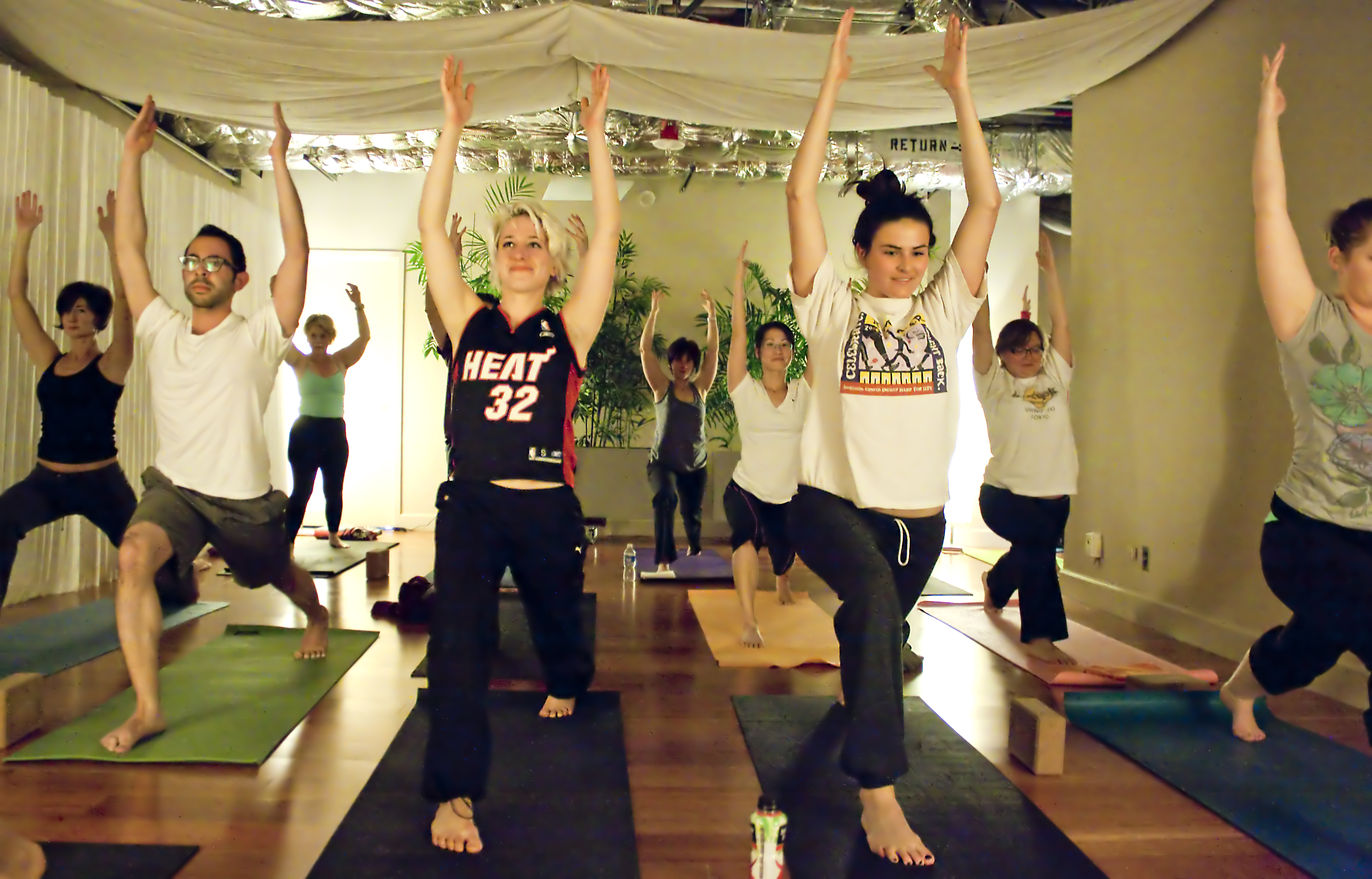Only steps away from the bustling corridor “C” of the Semel Institute for Neuroscience and Human Behavior is a small room dimly lit by Japanese lanterns.
Instead of hospital linoleum, there are gleaming wooden floors, soft curtains and lush, leafy ferns. Rather than clipboards, computers and clocks, there are yoga mats, cushions and a profound sense of silence. Any sound that travels from the corridor is muffled and quelled.
It is quiet and still ““ a calm haven in the midst of a fast-paced work environment.
The room, dubbed “C-Space,” was established for people typically associated with wellness and good health: the staff and faculty of UCLA Health System. The space is there to relieve staff and employees of physical and mental stress that may arise during their hectic work days.
Open Monday to Friday from 7 a.m. to 9 p.m., C-Space offers Health System employees free yoga, tai chi, qigong, pilates and guided meditation directed by professionals from UCLA Recreation.
When classes are not in session, employees are free to drop in to stretch, meditate, read a book or simply unwind. The room is not accessible to the general public or patients.
“I can only describe it as truly brilliant,” said Agatha Lenartowicz, a postgraduate research student at the Medical Center. “Doing yoga here at C-Space allows me to focus inwards and get away from the stress of daily work.”
The space is operated by UCLA’s Mindful Awareness Research Center and is funded by the UCLA Health System Wellness Initiative. Both of these groups work to foster an awareness of personal health among students and staff to enhance their quality of life.
Sue Smalley, founder of the research center, started C-Space about five years ago after a melanoma scare forced her to examine her own personal health.
As a working mother of three, she realized she was rarely taking out a moment for herself. At the time, Smalley was a professor in the department of psychiatry and behavioral sciences. She said her professional field a was very competitive one.
“The area of psychiatry that I was working in was focused on looking outward in terms of genes and biology,” Smalley said. “I found that myself and my colleagues were too busy looking outside ourselves and failing to focus inwards.”
Smalley began meditating and practicing yoga, which spurred the idea for C-Space. She said the practices awarded her a greater sensibility than that of her busy workload. The science behind the meditation activities indicates a stress reducing component, which is beneficial to greater health, Smalley added.
“I experienced a profound connection with something larger than myself,” Smalley said.”I realized that it was important for everyone to self-reflect, and not forget our sense of who we are.”
Both the structure and the environment of C-Space arose from that idea.
The silent atmosphere of the space is a design created to facilitate self-reflection.
“The room was specifically built to block out external noise,” said Stephanie Hechtman, a yoga instructor at C-Space. “Unlike many other workplace facilities like this, C-Space was designed to be as isolated as possible from the rest of the building.”
Its location on the bottom floor of the building means that participants can take classes before or after work, or even during their lunch breaks.
Lenartowicz is one staff member who takes advantage of lunchtime yoga sessions. If it wasn’t for C-Space, she said she would not be able to do yoga, because she does not have the time to go to the John Wooden Center, change and take a class on an average day.
“Doing yoga on a lunch break is strange at first, but I have found it helps me focus later on in the day,” Lenartowicz said. “It acts as a great balance to the craziness of work.”
Lenartowicz practiced yoga for some time at her home gym before the stress and time implications of commuting made that an impossibility. “Most people would have given up exercise that they did in college if it wasn’t readily available,” she added.
While the instructors are from UCLA Recreation, the proximity of the space was designed to separate it from other fitness resources at UCLA.
“Whereas the Wooden Center is focused on fitness and physical strength, the C-Space is more about being mindful and is about allowing health staff to find a personal, not physical strength within,” says Ragini Gill, a UCLA Medical Center wellness coordinator.
For that reason, the use of C-Space is restricted to UCLA medical staff and employees. Long hour shifts and mentally challenging tasks often create a high-stress work environment, Gill said. She said the Wellness Initiative wanted employees to know that there was a space solely for them.
“Too many people in high-stress professions do not take the time to focus on themselves,” Hechtman said. “This leads to heart disease, hypertension, obesity and it can also instigate addiction problems when people reach for substances to help them relax.”
An average of 1,200 users per week visited the space last quarter, according to census reports from the Wellness Initiative. It is a number that increases annually, according to Smalley.
“Our initial reception was ecstatic,” she said. “We received letters from both staff and faculty thanking us for the center and what it did for them.”
The effects of C-Space on staff members is also evidenced in the friendly, happy chatter that comes from the employees on their way to the lunchtime yoga class.
Hechtman believes C-Space has instigated a self-awareness in employees that is impossible to turn off.
“Once you start, it’s impossible to stop,” she said. “It’s a healthy awareness that remains with people for the rest of their lives.”
